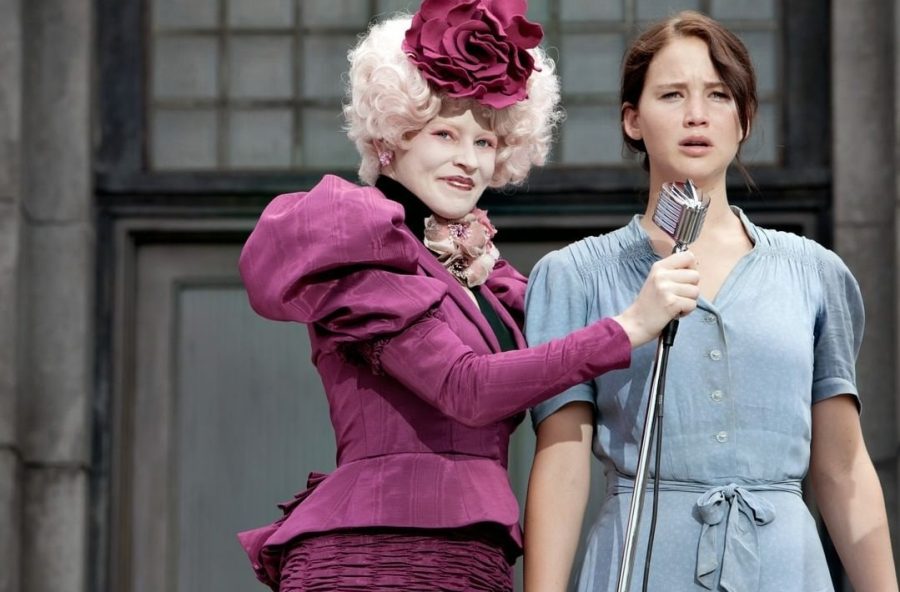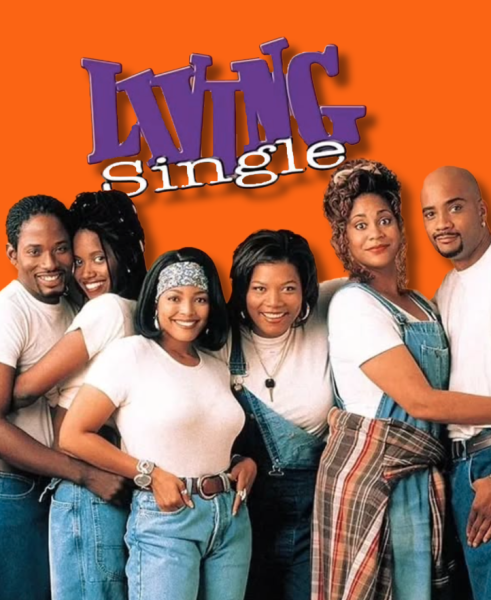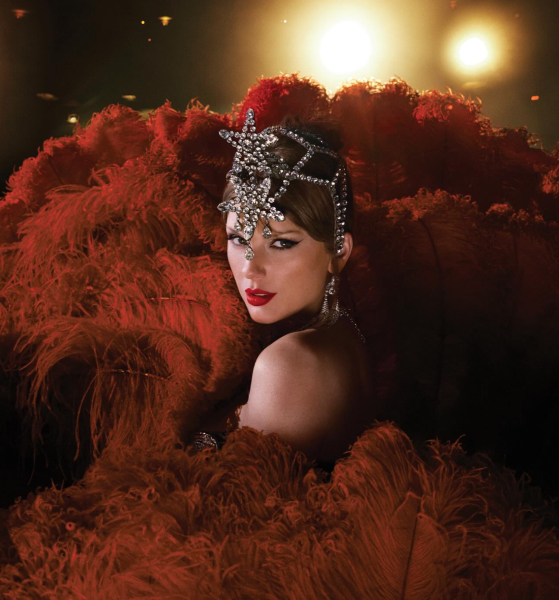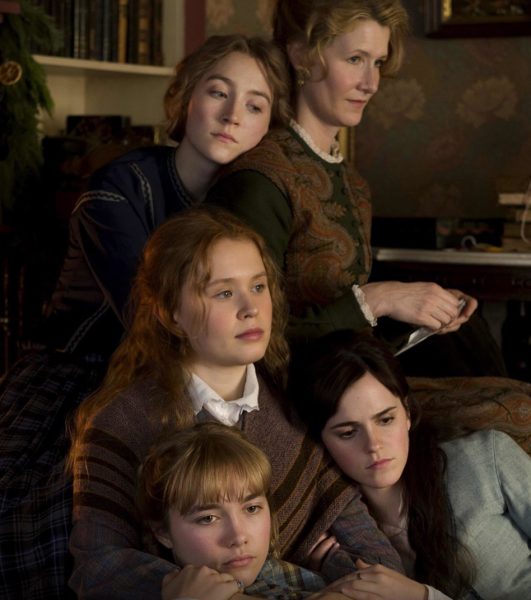Collins’ Modern Classic: “The Hunger Games”
I remember seeing it in the theaters. Not the movie, the poster. My mother bought me the book a few days later, insisting that she would read it before I did to ensure that it was appropriate for her, then, fourthgrade daughter. I read it in secret, of course, drinking in the words and holding onto the horrific images I knew I did not yet understand. Even at the time, I understood why my mother was hesitant to let me read Suzanne Collins’ novel. Even then, I knew that “The Hunger Games” was not simply a young adult novel on par with “Harry Potter” or “Twilight,” but a prescient dystopia that asked chilling questions about the modern United States of America.
You may know the word “dystopia,” it’s thrown around quite a bit. According to Merriam-Webster, its traditional definition is “an imagined world or society in which people lead wretched, dehumanized, fearful lives.” This genre of storytelling grew out of the much older genre of “utopian” novels, which began with Thomas More’s 1516 “Utopia.” While utopias describe worlds made perfect, often through strict order and things that would now be considered human rights abuses (including eugenics), dystopian literature and film turns these dreams of perfectly ordered societies into nightmares. Yevgeny Zamyatin began this genre with his 1924 novel, “We,” which established many of the dystopian hallmarks we see today. This includes totalitarianism, extreme violence, suppressed humanity and a stark divide between human artifice and the natural world.
If you have read or watched “The Hunger Games” as most people who were coming of age in the mid-to-late 2010s have, then you might recognize a few of those list items. The story of “The Hunger Games” centers around Katniss Everdeen, a 16-year-old girl who volunteers in her sister’s place to take part in the yearly death match that her totalitarian government forces each district to partake in. As one of the two tributes from her district, she is forced alongside all of the other tributes from the 11 other districts to put on pretty costumes, display her skills and turn this gladiatorial blood bath into a dazzling reality show.
The Capitol, which houses the government body responsible for the games, watches in fascination as 24 children slaughter each other until only one remains. This story hits all the major chords of a dystopia. When comparing it to Zamyatin’s “We,” it has the totalitarian government, plenty of extreme violence, heavy emphasis on the juxtaposition between the natural appearance of the citizens of the districts and the almost inhuman appearance of the Capitol citizens and, lastly, a suppression of humanity in the fact that children are forced to kill each other. While these cement the novel within the category of dystopia, it is something else that elevates the story to one of such great importance for the American reader: the similarities between the antagonists and ourselves.
Within “The Hunger Games,” there are a few levels of who can be viewed as the antagonists. Indirectly, the citizens of the Capitol threaten Katniss as, rather than directly attempting to kill her, they support the system that has put her life in jeopardy. In this group of people, we can identify many trends of American culture taken to the extreme. Early in the book, Collins describes one of the members of Katniss’ beauty-prep team as having “aqua hair and gold tattoos above her eyebrows,” and another as having skin “dyed a pale shade of green.” . Tattoos and dyed hair are a very common aesthetic choice for American people, but dying skin, however, seems a bit more extreme. Except, it’s not. The rows of self-tanning products and sheer existence of tanning salons attests to the fact that many people in America artificially change the color of their skin to match an aesthetic.
How the Capitol citizens react to the games also echoes American cultural trends. While we do not have a yearly death match, there are plenty of crises that threaten people’s lives around the country. The way our media chooses which to pay attention to is not that different from how the tributes fight for life-saving aid in the arena. To get this aid, they need to create brands in order to garner interest from wealthy, Capitol citizens. Katniss and her fellow tribute, Peeta, become the “star-crossed lovers from District 12.” Each of these children turn themselves into a commodifiable brand in hope of winning help. If this idea seems completely removed from our world, think of Little Miss Flint. Mari Copenhany, even though she was a child, became the face of a movement trying to bring awareness to a predominantly Black city whose water, through government negligence, was poisoned with lead. If it hadn’t been for her sweet smile and heart-tugging speeches, her community might still be suffering.
More directly, the primary antagonist when Katniss finds herself in the horror of the games is Cato. They find themselves thrown together in the final fight of the arena as Katniss realizes how near she is to going home and Cato realizes his damnation. “One more kill,” he says. “It’s the only thing I know how to do to bring pride to my district. Not that it matters.” He’s the most ruthless character, but he’s another mirror for the audience. For the majority of us, we either read this book or watched this movie in as much comfort as the citizens of the Capitol and with as much eagerness for violence as Cato. As much as we may feel for Katniss, we are complicit in her abuse and the abuse of the other children in the arena. Just as Cato is. And, just as he does, we begin to see ourselves for what we really are as we realize the fictions that we have bought into. For Cato, those fictions are the myths of glory that his district turned him into a killer with. For us, the fiction is that Cato is the absolute antagonist in this story, rather than being just another of the abused children we watch die horribly.
So, the question becomes, how do we relate to this? Dystopian stories are not meant to be perfect mirrors, but reflections intentionally distorted to ask a question. Zamyatin’s “WE” and Orwell’s “1984” both ask what happens when we push government control too far and suppress human individuality. Collins’ “The Hunger Games” asks us something different. If we, as modern day Americans with the privilege that enables us to dye our hair whatever color we wish, or obsess over our wardrobes or watch movies about violence without ever fearing those same acts being done to us — if we, in this dystopia, are more similar to the antagonists than the protagonists — than upon whose shoulders does our wealth and privilege rest? Who, in our world, is Katniss Everdeen? In a world where wealth disparity grows greater every day, where healthy food becomes a signifier of wealth, and climate disaster threatens poorer communities disproportionately, it is important to remember Collins’ question. Upon whose shoulders does our wealth rest?

Kari White is a senior from the blink-and-you’ll-miss-it state of Delaware. She is majoring in English with a concentration in creative writing, as well...













































































































































































































